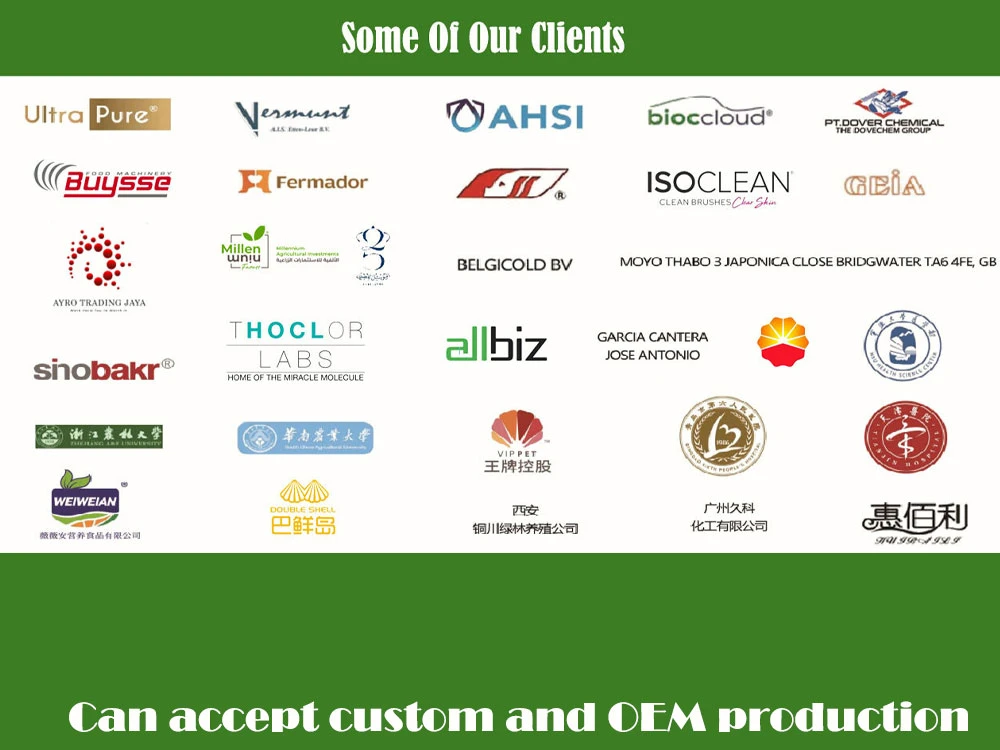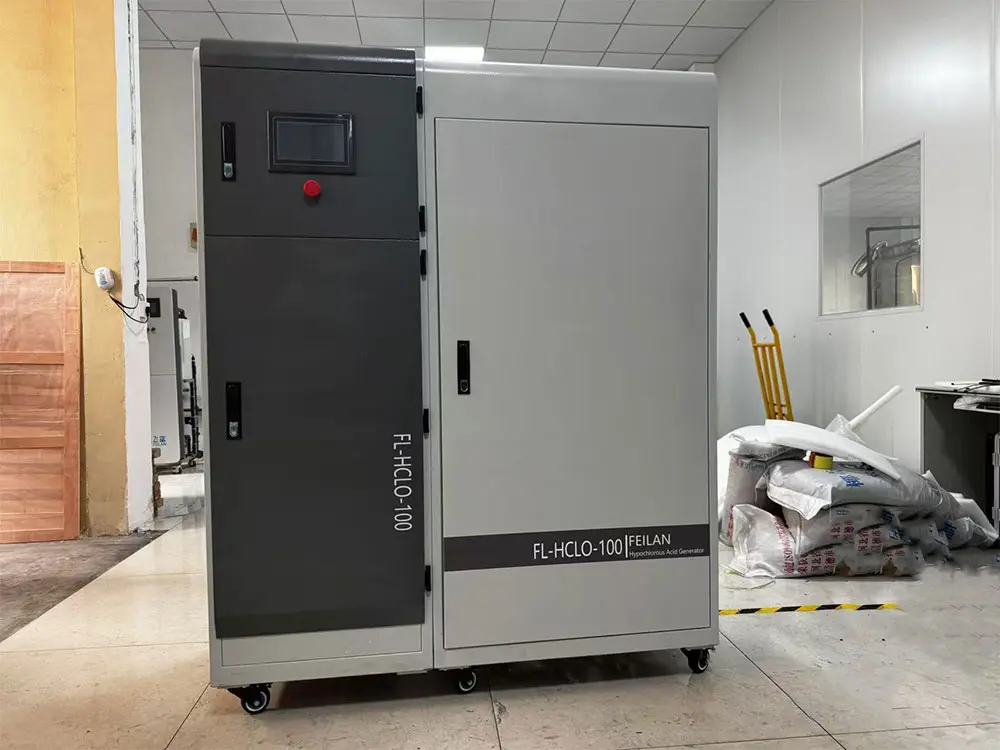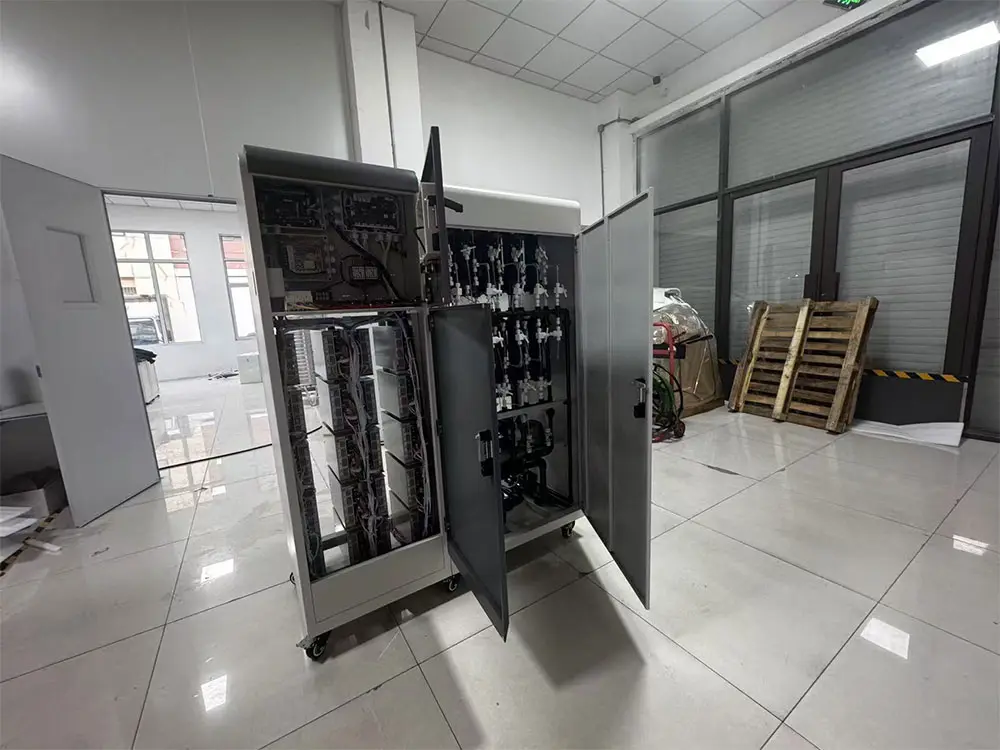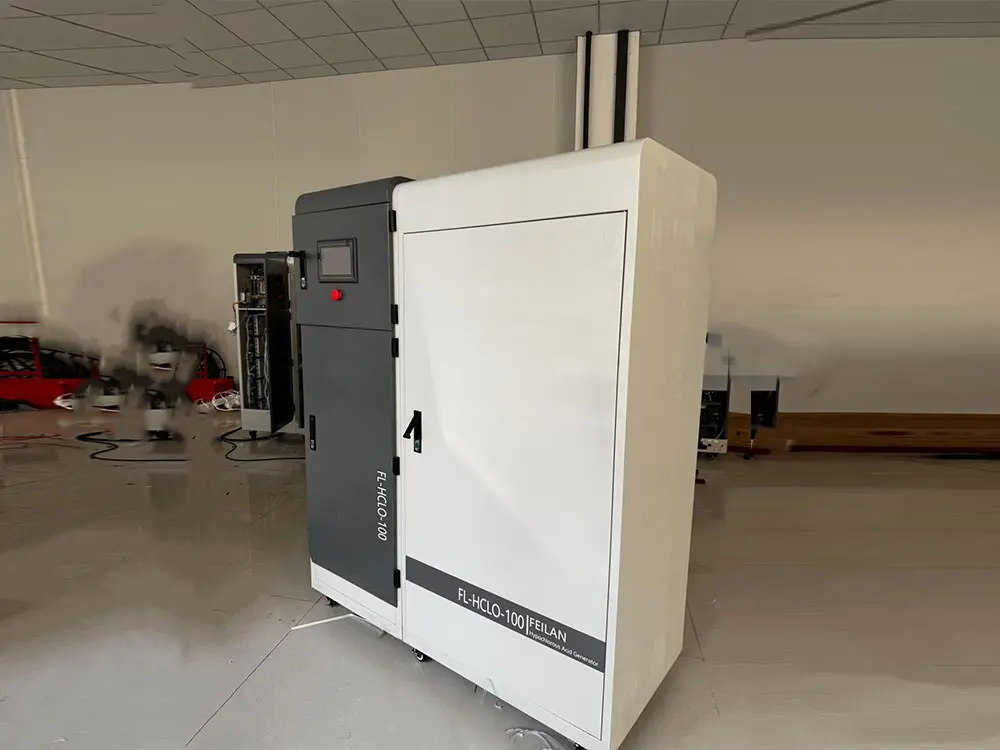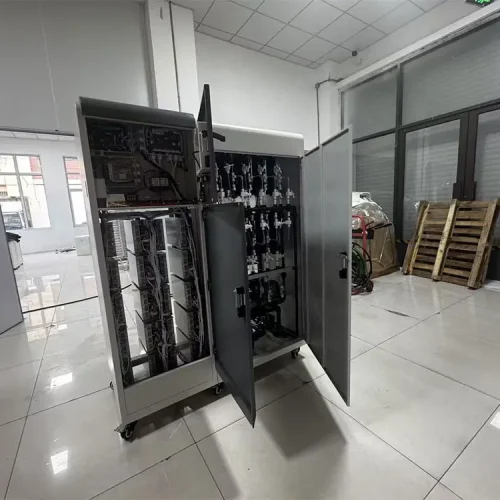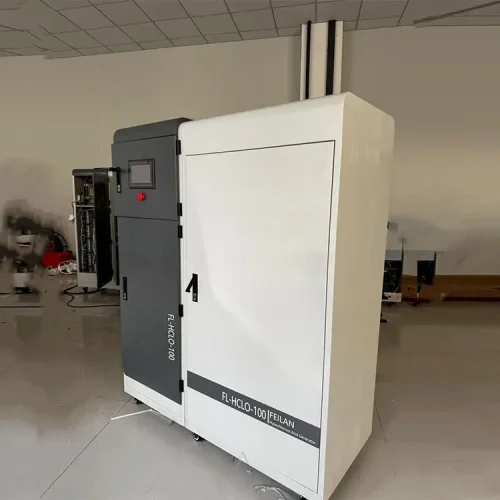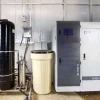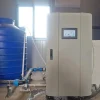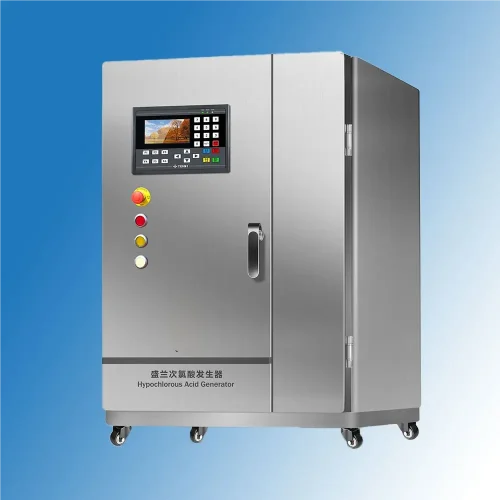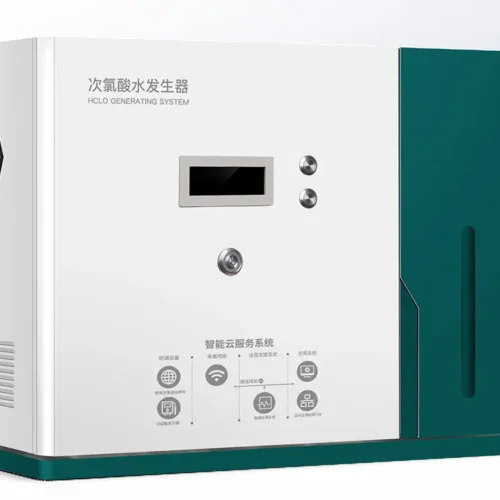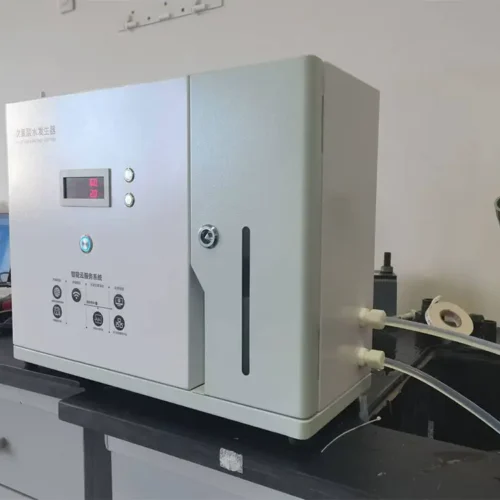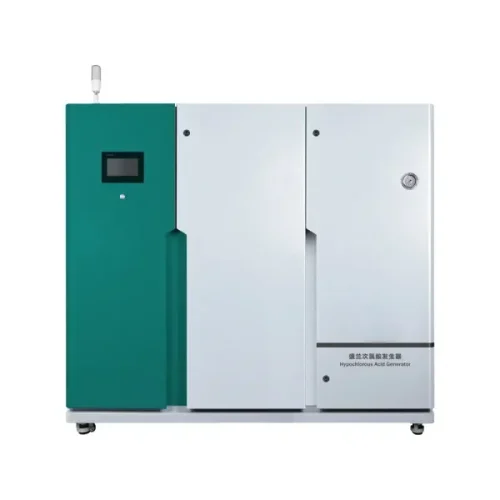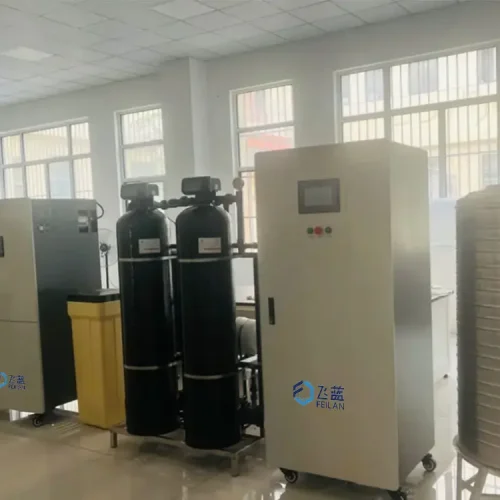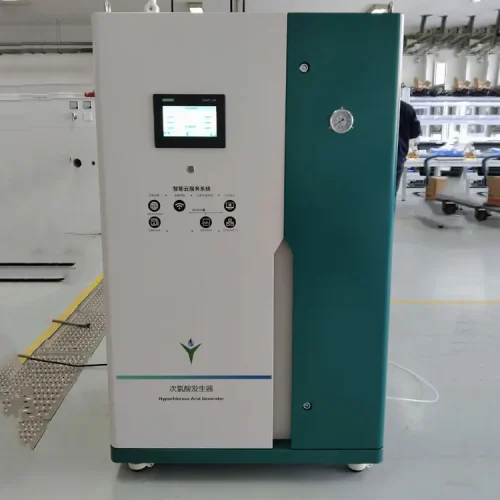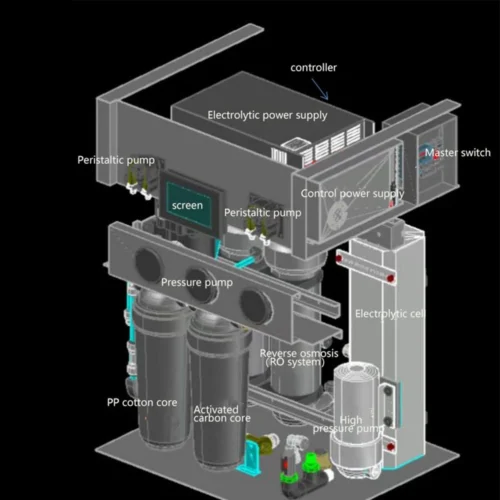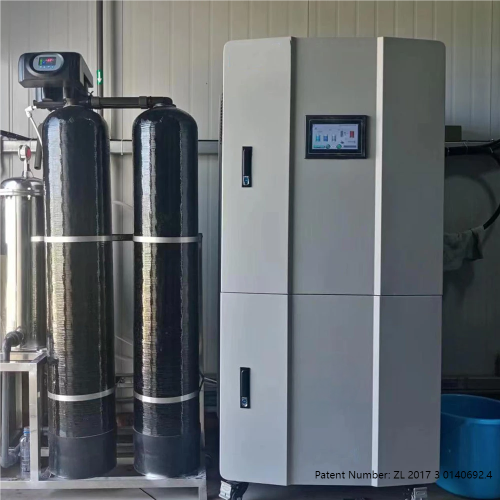Today, with the continuous development of animal husbandry industry, the scale of breeding continues to expand,
but the ensuing environmental problems are becoming more and more prominent. The odor problem is particularly troublesome.
The odor not only seriously affects the health and growth performance of the animals in the farm, but also causes great trouble to
Due to the surrounding environment and residents’ life. So Seeking efficient, safe and environmentally friendly deodorization methods
has become a key problem to be solved in the animal husbandry industry. In recent years, hypochlorous acid,
as an innovative deodorization equipment, has gradually emerged in the field of animal husbandry, bringing new hope to solve the odor problem.
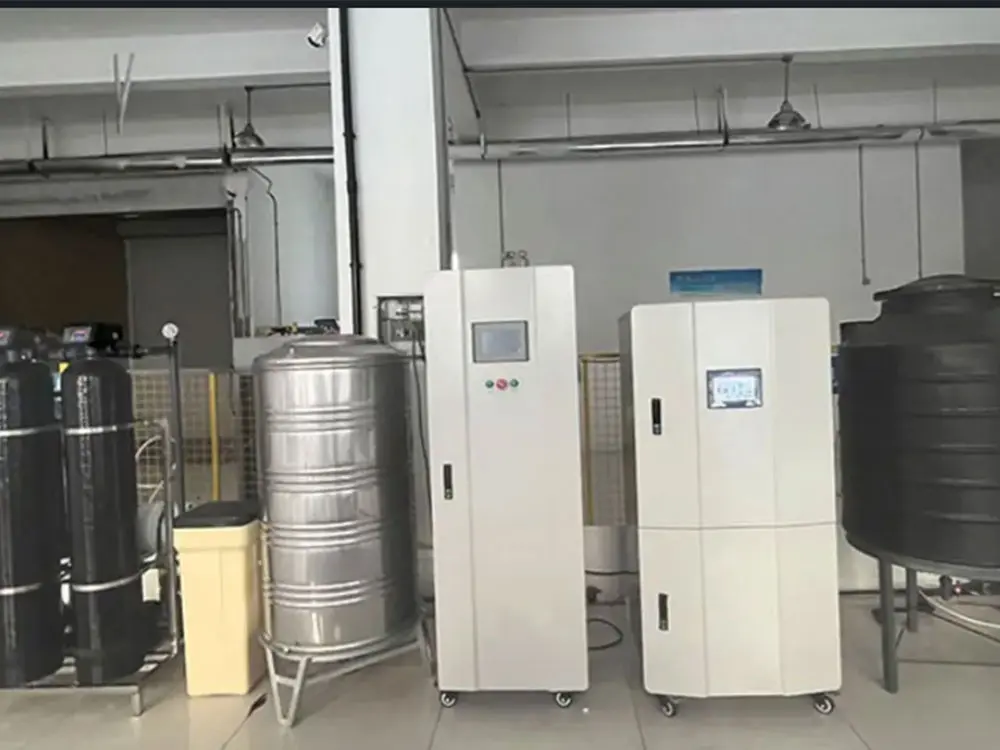
Hypochlorous acid generator parameters
| Product name | Hypochlorous acid generators are used for deodorization in livestock breeding |
|---|---|
| concentration | 50-500PPM |
| Flow rate | 5000L/H |
| PH of acidic water | 5-6.5 |
| Electrolyte | salt(Nacl) or Hydrochloric acid(HCL 5%) |
| Power | 6200W |
| Concentration | 380V/50Hz |
| Size | 70cm*60cm*175cm |
The source and harm of odor in animal husbandry
The odor in livestock breeding mainly comes from the decomposition of animal feces, urine, and feed fermentation.
Livestock manure contains a lot of organic matter, under the action of microorganisms, will decompose to produce ammonia,
hydrogen sulfide, methane and other harmful gases. In pig farms, for example, pig feces and urine are fermented in an anaerobic environment,
which releases high levels of ammonia and hydrogen sulfide. These odors not only have a pungent smell, but also cause many hazards to animal and human health
For farmed animals, long-term exposure to odor will lead to a decline in animal immunity and a significant increase in the incidence of respiratory diseases
and intestinal diseases. For example, ammonia will stimulate the respiratory mucosa of animals, making animals easy to change into pneumonia,
bronchitis and other diseases, affecting the growth rate and feed conversion rate of animals, and increasing the cost of breeding.
According to relevant studies, in the environment with excessive ammonia concentration, the egg production rate of poultry
can be reduced by 10%-20%, and the growth rate can be reduced by 15%-20%
At the same time, the smell of the farm also has a serious impact on the surrounding environment and residents’ lives.
The spread of odor in the wind will reduce the surrounding air quality, cause dissatisfaction and complaints from residents,
and may even lead to environmental disputes, restricting the sustainable development of livestock farming.

Working principle of hypochlorous acid generator
Hypochlorous acid generator is a device capable of producing hypochlorous acid solution. At present,
there are two main types of common hypochlorous acid generators: one is to produce hypochlorous acid solution by electrolyzing dilute hydrochloric acid,
and the other is to produce hypochlorous acid solution by electrolyzing saturated brine. Among them,
the way of electrolyzing saturated brine has obvious advantages in raw material procurement and storage, equipment corrosion,
operation safety, environmental protection and chloride residue.
Taking the hypochlorite generator of electrolytic saturated brine as an example, the working process is as follows:
The unit first connects the municipal tap water, removes the impurities in the water through the built-in filter,
and then enters the softer to remove the calcium and magnesium ions in the water to prevent scale in the electrolytic process.
Then, a certain proportion (such as 0.3%-0.5%) of saturated brine is drawn and mixed with a large amount of
softened water (99.5%-99.7%) into the electrolytic cell. In an electrolytic cell, a series of complex chemical reactions occur
that ultimately produce a primary electrolyte (Cathox solution) and a secondary electrolyte – hypochlorous acid solution (Neuthox bactericidal solution).
The effective chlorine concentration of hypochlorous acid solutions is usually between 200-1000 PPM,
the pH can be freely adjuste in the range of 3.0-8.5, and has a high REDOX potential (ORP). The reason
why hypochlorous acid has a strong deodorization and bactericidal ability is that the principle is:
hypochlorous acid molecules are small and have no charge, and can easily penetrate the cell wall of bacteria,
hydrolyze to form atomic oxygen with strong oxidation, and denaturate the nucleic acid and cell protein of bacteria,
so as to achieve the purpose of sterilization. At the same time, the Cl ions in hypochlorous acid can significantly
change the osmotic pressure in bacteria, making it inactive. In terms of deodorization, hypochlorous acid
can REDOX with odor gases such as ammonia and hydrogen sulfide to decompose them into harmless substances, so as to achieve efficient deodorization.

Factory strength

Case client
